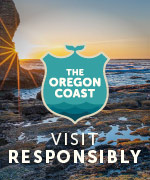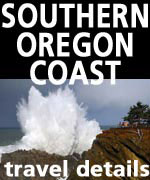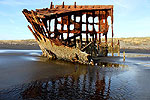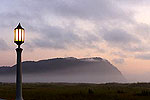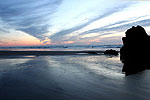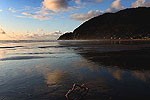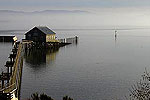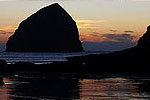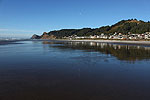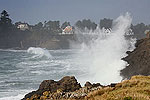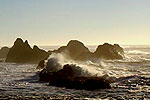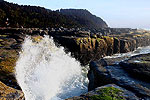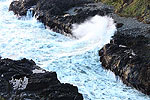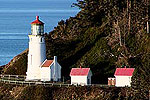Cannon Beach Will Whoop It Up Over Return of Puffins to North Oregon Coast - Puffin Photos
Published 03/30/25 at 8:35 p.m.
By Oregon Coast Beach Connection Staff
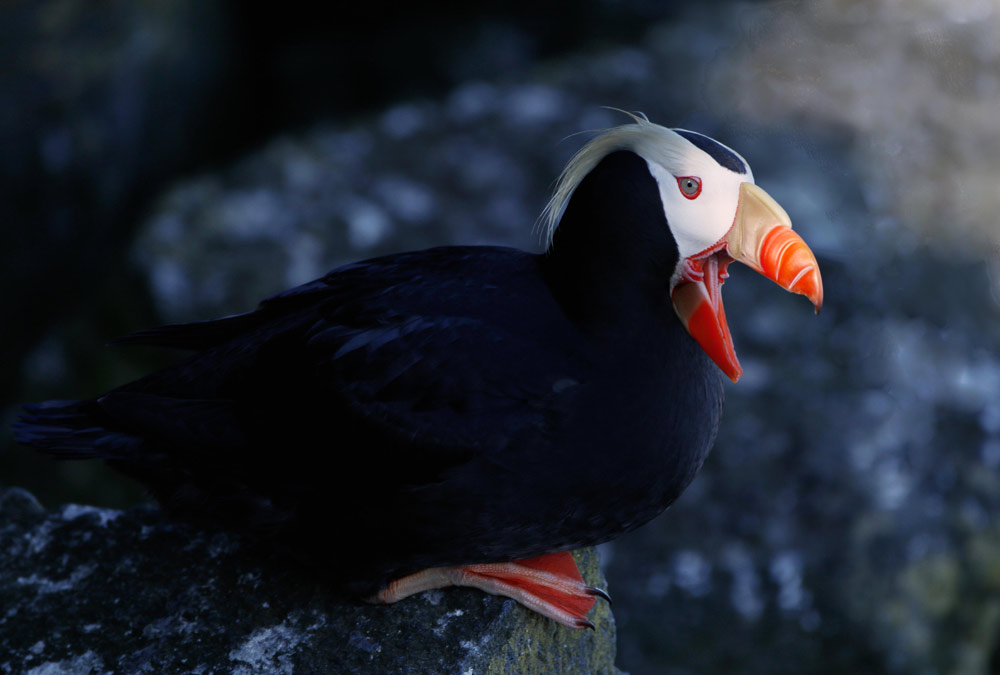
(Cannon Beach, Oregon) – Soon, cometh the tufted puffin. (All photos courtesy Ram Papish)
Includes exclusive listings; some specials in winter
In Cannon Beach:
Includes rentals not listed anywhere else
In Manzanita, Wheeler, Rockaway Beach:
Some specials for winter
In Pacific City, Oceanside:
Some specials for winter
In Lincoln City:
Some specials for winter
In Depoe Bay, Gleneden Beach:
Some specials for winter
In Newport:
Look for some specials
In Waldport
Some specials for winter
In Yachats, Florence
Some specials for winter
Southern Oregon Coast Hotels / Lodgings
Reedsport to Brookings, places to stay; winter deals
The cute and comely bird will start arriving to the north Oregon coast in April and so will no small amount of celebration. Cannon Beach is always the most high-profile spot for catching sight of the black, orange and white beauties, with Haystack Rock a major breeding ground.
So it's there that Haystack Rock Awareness Program will host its Annual Welcome the Puffins Celebration, happening on Sunday, April 13th in partnership with the Friends of Haystack Rock (FHR). It happens right there on the beach in front of the landmark.
“Come join us at Haystack Rock, rain or shine, from 8 am to 10 am to celebrate the seasonal return of Tufted Puffins to their nesting grounds,” said FHR. “Our talented team of interpreters will be sharing binoculars and scopes to visitors and teaching them how to spot our circus friends among the other nesting sea and shore birds. Expect an educational fun-filled morning for kids with a Tufted Puffin activity table and our interactive Tufted Puffin Predator Game where children can learn about the many natural and anthropogenic challenges nesting puffins face when raising their young.
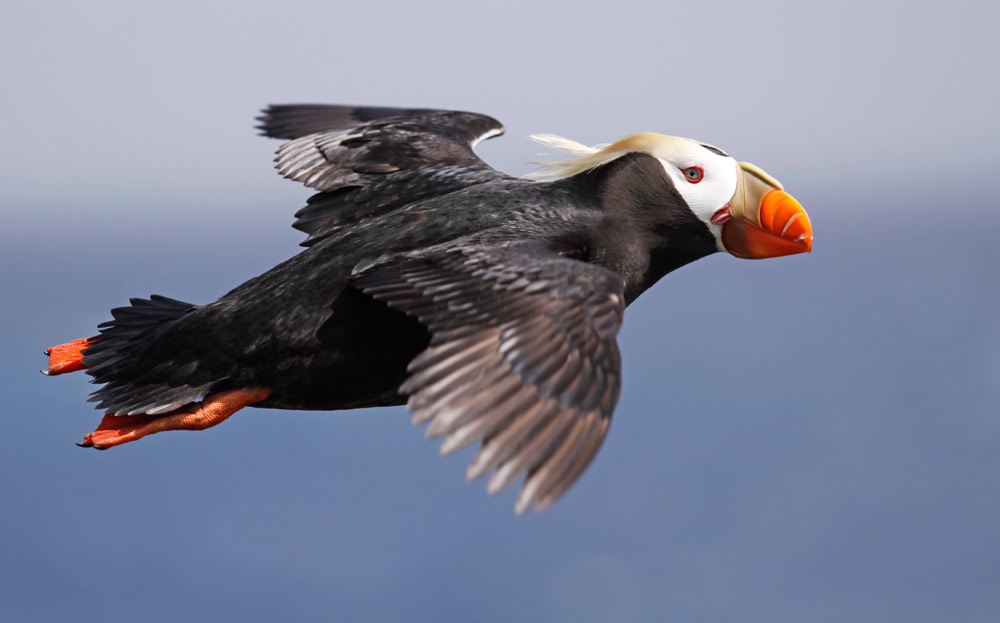
Ram Papish photo - [ see where to stay for this ]
Bandon and around the Coos Bay-area's Cape Arago are other areas where the feathered cuties touchdown, but they're harder to see. Cannon Beach is the sweet spot.
However, the tufted puffin population on the Oregon coast is in a steep decline. In 1988, the US Fish and Wildlife Service (USFWS) estimated the population at approximately 4,858 birds; by 2021, that number had plummeted to just 553. Haystack Rock in Cannon Beach, home to Oregon's second-largest colony and one of the Northwest's best spots to view Tufted Puffins during their breeding season, has also seen a stark decrease in numbers. Annual data collection by USFWS staff and volunteers reveals the bird population at Haystack Rock dropped from 400 birds in 1978 to only 102 by 2024.
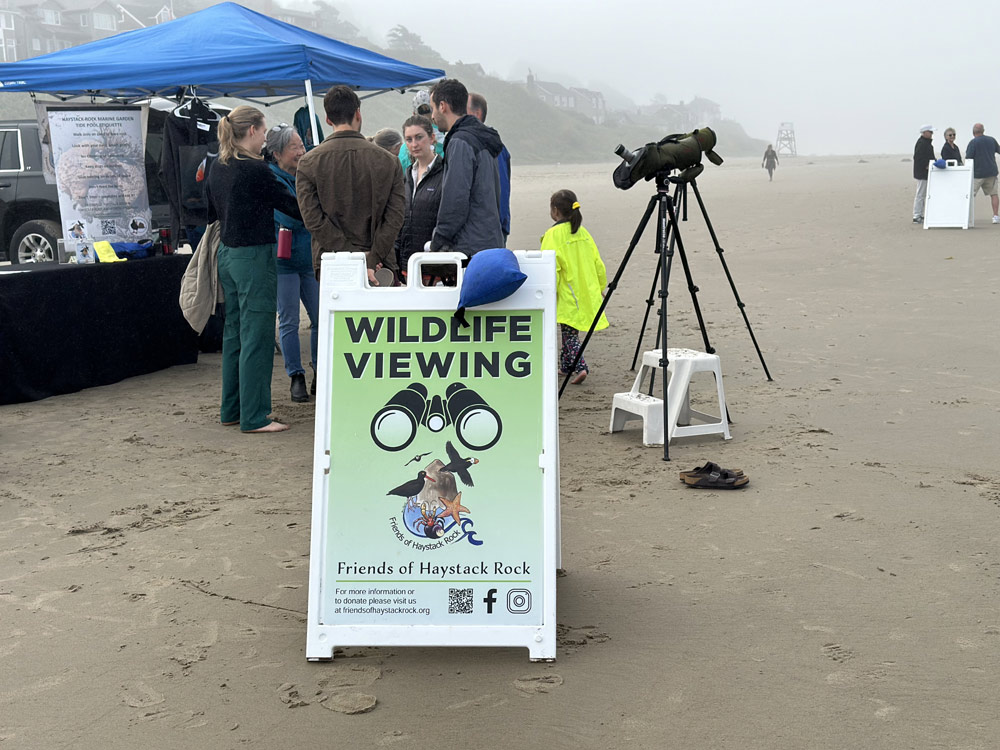
Ram Papish photo - [ see where to stay for this ]
To address this crisis, the National Audubon Society’s Seabird Institute, with support from Friends of Haystack Rock, created a dedicated position to facilitate collaboration among various stakeholders and optimize the limited resources available for puffin conservation in their southern range, particularly Oregon. A new working group with representatives from organizations such as Friends of Haystack Rock, Haystack Rock Awareness Program, National Audubon Society, Bird Alliance of Oregon, USFWS, Oregon Department of Fish and Wildlife, Oregon State University, Shoreline Education for Awareness, American Bird Conservancy, and others is developing a list of priority actions aimed at meeting a 10-year goal to "halt the decline." Strategies under consideration encompass hands-on conservation efforts, educational initiatives, and community outreach.
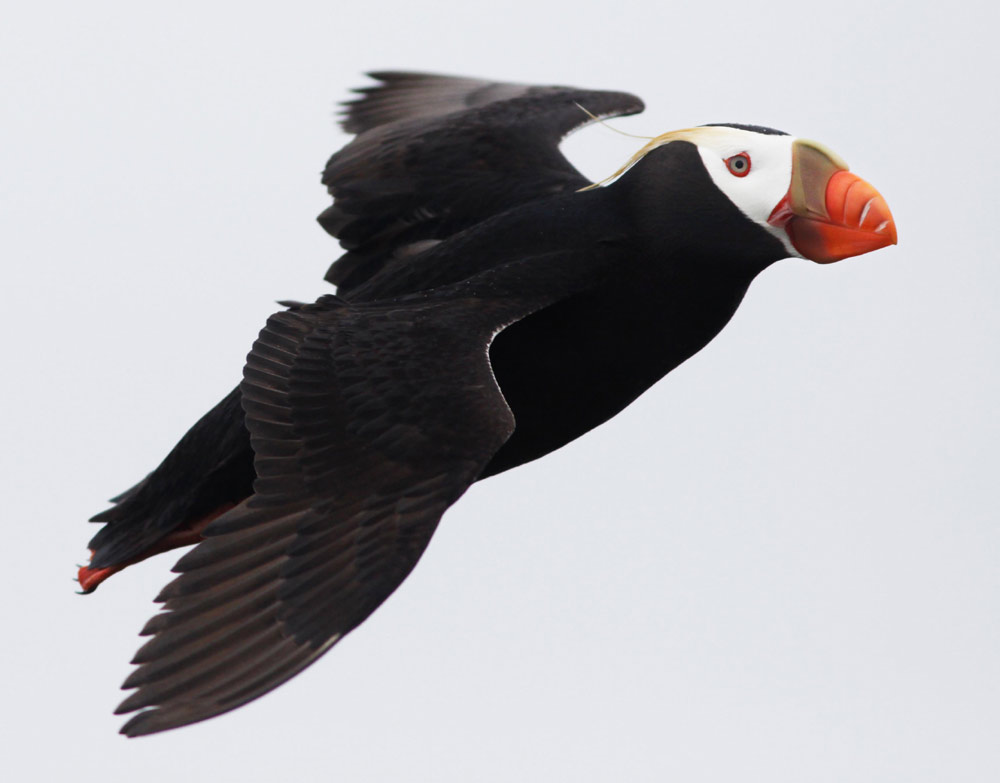
Ram Papish photo - [ see where to stay for this ]
“While taking action to protect Oregon’s Tufted Puffin is critical, it’s equally vital for people to understand why conserving this extraordinary seabird matters,” explains Katherine Luscher, Tufted Puffin Coordinator at Audubon’s Seabird Institute. “Events like the Welcome Puffin Celebration at Cannon Beach foster community engagement and support for puffins and other seabirds. And really, who can resist smiling at a puffin, whether it’s your first time seeing one or your fiftieth?”
In early April, puffins begin arriving at Haystack Rock. Most return with their lifelong partners to the same protected burrows they used the previous year to raise their young. During their approximately 16-week stay, the birds spend the initial weeks staking out their territory and tidying their burrows.
Once the burrow is ready, the female puffin lays a single, chicken-sized egg. Both parents share incubation duties for about 43 days. Though the newly hatched pufflings are typically nestled inside the burrow, visitors might catch glimpses of them at Haystack Rock from late June to mid-August.
While puffling activity might be hard to observe due to the bustling environment, watching the parent puffins shuttle back and forth with their bills full of fish for their growing puffling is a captivating sight. After 38 to 59 days, pufflings leave their burrows under the cover of darkness, evading predators like bald eagles, and embark on their journey to the open ocean. There, they will spend the winter growing up fast, no longer guarded by their parents.
To learn more about Tufted Puffin conservation efforts or to make a donation, visit the Friends of Haystack Rock's Puffins page. MORE PHOTO GALLERY BELOW
Hotels in Cannon Beach - Where to eat - Cannon Beach Maps and Virtual Tours
Oregon Coast Vacation Rentals
Oregon Coast Lodging Specials
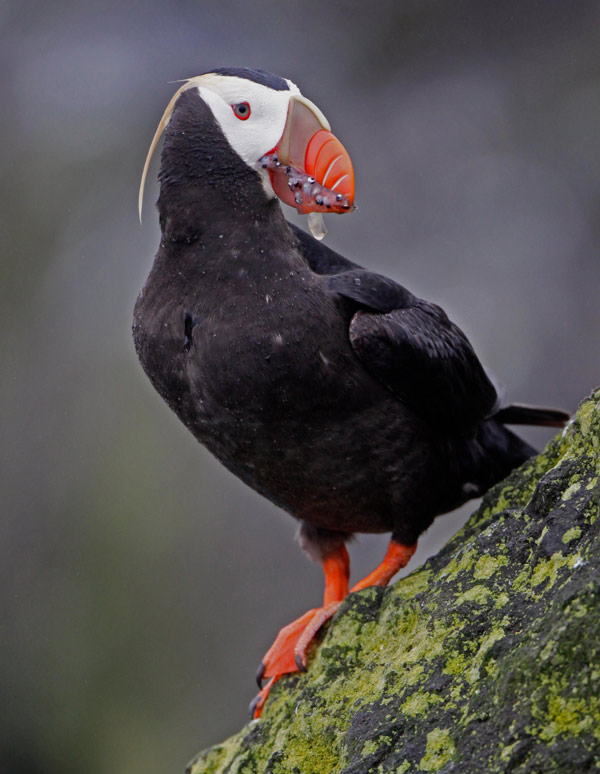
Ram Papish photo - [ see where to stay for this ]
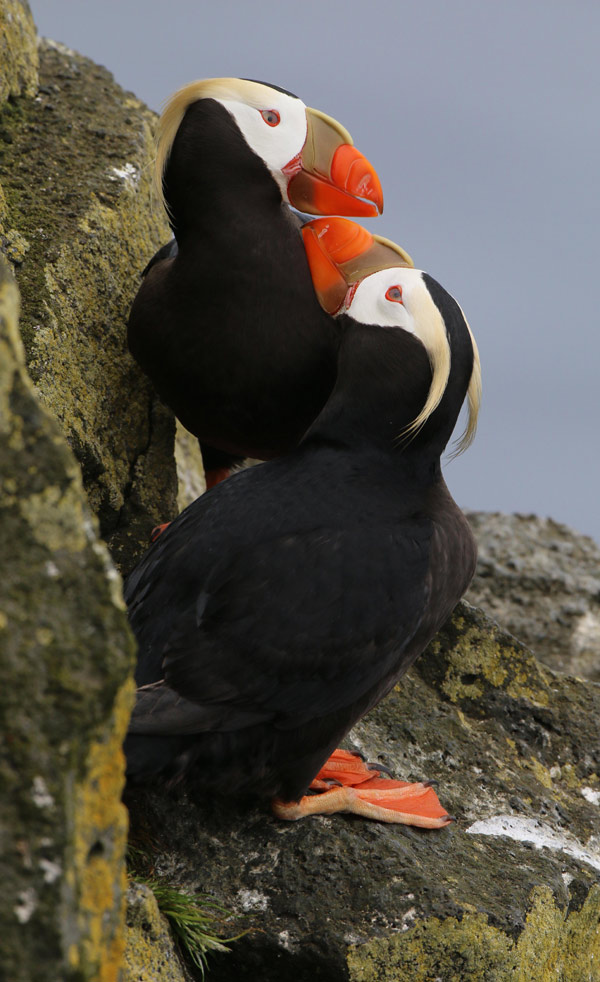
Ram Papish photo
More About Oregon Coast hotels, lodging.....
More About Oregon Coast Restaurants, Dining.....
 Andre' GW Hagestedt is editor, owner and primary photographer / videographer of Oregon Coast Beach Connection, an online publication that sees over 1 million pageviews per month. He is also author of several books about the coast.
Andre' GW Hagestedt is editor, owner and primary photographer / videographer of Oregon Coast Beach Connection, an online publication that sees over 1 million pageviews per month. He is also author of several books about the coast.
LATEST Related Oregon Coast Articles
Special Lincoln City Drop Brings Over 100 Glass Floats and Philanthropic Twis...129 exclusive yellow glass floats June 1 to June 14. Lincoln City events
Authorities Seek Suspect Who Stabbed Baby Seal on Oregon Coast
Attack happened in Neskowin: see the police drawing. Weather
Rugged Central Oregon Coast This Summer: Guided Pontoon Boat, Tidepool and Ca...
Lincoln City events every week: guided boat, tidepools gatherings, tours of Cascade Head. Lincoln City Exploriences. Click for schedule
Destructive, Invasive Crab Found on N. Oregon Coast, Officials Ask Public's Help
Chinese mitten crab was found near Astoria. Marine sciences
Oregon Officials: What Not to Do Building Campfires on Coast, in Forests
Guidelines slightly different for coast vs inland. Weather
BBQ, Blues 'n Brews Hits Coos Bay Area Again, a South Oregon Coast Highlight ...
May 24-25 at The Mill Casino - Hotel and RV Park in North Bend. Coos Bay events
Winema Wayfinding Point or Pacific Crest Wayside: an Oregon Coast Puzzle
Between Neskowin and Pacific City sits a viewpoint with two names. Travel tips
Coast Guard Medevacs Patient from Cruise Ship Off South Oregon Coast - Video
15 miles from Coos Bay, the man was taken to a local hospital in good condition. Beach safety
Back to Oregon Coast
Contact Advertise on Oregon Coast Beach Connection
All Content, unless otherwise attributed, copyright © Oregon Coast Beach Connection. Unauthorized use or publication is not permitted



















